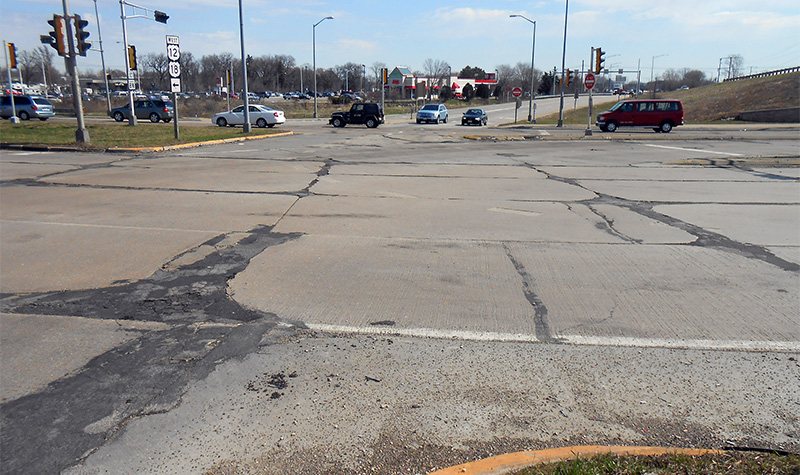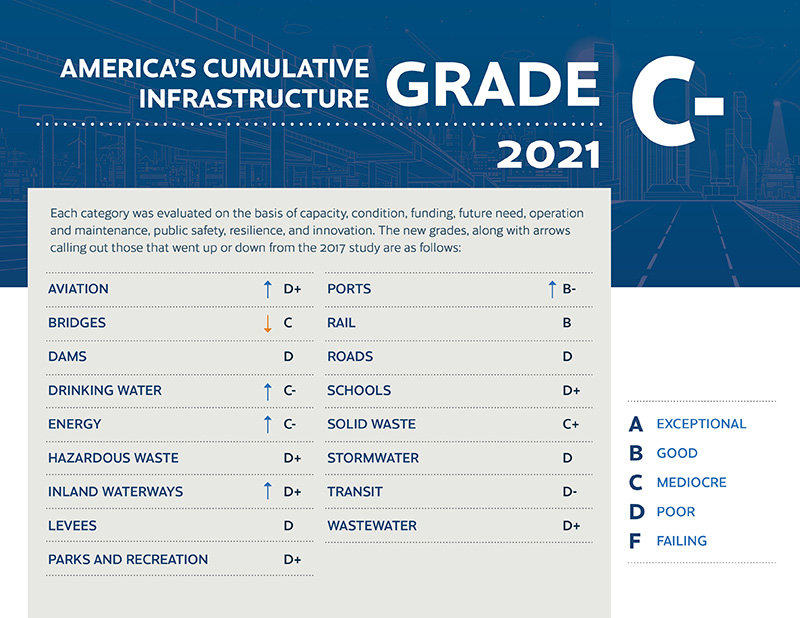It’s Time to Raise the Grade on Our Nation’s Infrastructure

The American Society of Civil Engineers recently released the 2021 Report Card for America’s infrastructure. Much like a school report card, the study outlines the condition of 17 major infrastructure categories – from aviation to wastewater – in A to F letter grade format.
Sadly – and to be honest, shockingly – we’re not making the grade in many critical areas. America’s overall infrastructure grade scored a C-, up marginally from the previous ASCE report card in 2017, which rated America’s cumulative GPA for infrastructure at a D+.
Although we’re overall out of the D range – which hasn’t happened in 20 years – 11 of the 17 categories still landed there, with the lowest of all being our public transit systems. Aviation, dams, hazardous waste, inland waterways, levees, parks and recreation, roads, schools, stormwater, and wastewater received grades of D+ or D, with transit receiving a D-. According to the report, 45% of Americans have no access to transit. In addition, much of the existing system is aging, with funding limited to keep it in good working order.
Rail infrastructure earned the highest grade, a B. Ports received a B-.
What Are the Main Takeaways From the 2021 Report Card?
At the most basic level, our mediocre infrastructure GPA of C- indicates we’re not keeping up. We’re not keeping up with our existing infrastructure, let alone providing for new infrastructure we’ll soon need. The current administration just unveiled an ambitious infrastructure plan to address many of these deficiencies – but it has a long way to go before passage and possible implementation. In the meantime, it’s encouraging to see some silver linings shining through.

States and local governments are making progress, according to key findings outlined in the report’s executive summary, and increased federal investment or reform is also helping:
- 37 states have raised their gas tax to fund critical transportation investments since 2010
- 98% of local infrastructure ballot initiatives passed in November 2020
- At least 25 major cities and states now have chief resilience officers
What Are the Consequences When We Push Off Infrastructure Repairs and Maintenance?
The maintenance of our infrastructure is often done too late when it should really be a priority – done early and often. For budgetary reasons, many communities push off repairs until the point of failure. In retrospect, if they would have invested earlier in the cycle, their infrastructure would have lasted longer.
Aside from the financials, neglecting preventive maintenance can be downright dangerous. Pushing aside road and bridge repairs, for example, leads to deficiencies, failures, and, in the worst-case scenario, fatalities.
As the report findings suggest, we need to come together and put a collective focus on investment and resilience. Solutions are out there if we can agree to make them the priorities that they are.
Have questions? Contact our Civil + Municipal Engineering division.

Post a comment: